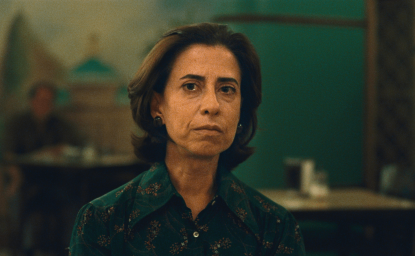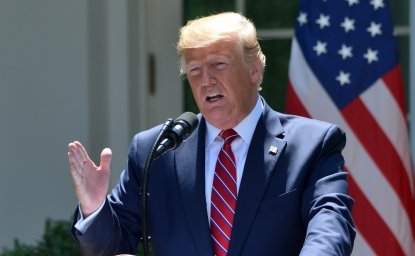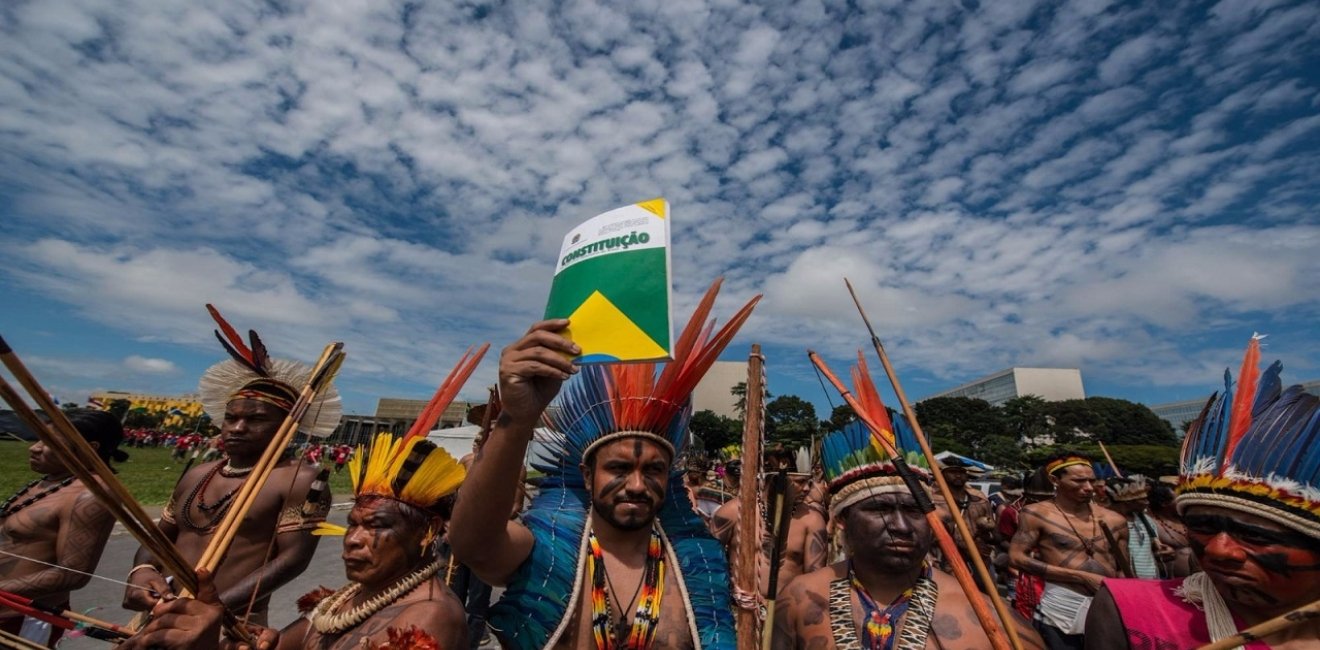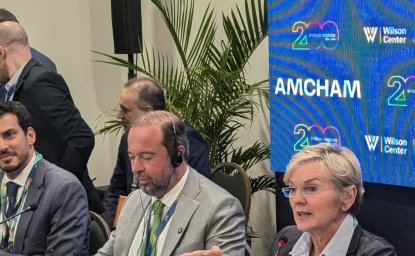
A blog of the Brazil Institute
The concept of environmentalism has changed over time. Initially focused on flora and fauna, conservation efforts increasingly strive to include the populations who have traditionally inhabited these lands. The change was partially prompted by criticism of traditional conservation strategies, which tend to follow Yellowstone’s top-down approach to conservation that favors extremely limited land use by local populations. Conversely, a cultural conservation approach aims to be more inclusive and values local populations’ traditional ecological knowledge as sustainable practices. Development models have similarly evolved, with environmental justice increasingly included as a core part of sustainable development. Nonetheless, policymakers in Brazil and elsewhere often overlook the importance of land rights within the broader sustainability panorama. Even as the global trend has shifted toward sustainable development, many Brazilian politicians and business leaders still believe that land rights for traditional populations conflict with development goals, leading to ongoing tension and outright conflict over land.
These challenges are on full display in the Brazilian Amazon—the largest and most biodiverse tropical forest in the world, and home to an array of traditional populations. As defined by Federal Decree 6.040, traditional Amazonian populations include indigenous peoples, but also other culturally distinct groups such as quilombola and extractivist communities—groups in which religious, cultural, and economic activities are closely tied to their territory.[1] Although the Brazilian government has recognized the collective right of some of these groups to their land, many struggle to obtain official titles for their territory.[2] Traditional populations’ important role in conservation often goes unrecognized, and pressure to use land for agricultural expansion and economic development further complicates the issue.
Beginning with the colonization of Brazil by the Portuguese, land use in the country has been characterized by large landholdings and occupation. In the 1970s, federal policies focused on development in the Amazon basin, as the government sought to stimulate economic growth through settlement and agricultural expansion. The development effort, which set aside demarcated indigenous territories and conservation units while encouraging large-scale property ranching, created an agrarian crisis. Instead of enhancing social welfare and alleviating poverty, the government’s strategy created land scarcity in Northern Brazil, contributing to land conflict that persists to this day. In 2017, the country registered the highest number of murders of environmental activists in the world, many of which were related to land rights.
There is an intrinsic relationship between land rights and environmental justice in Brazil. Environmental justice can be defined as the “fair treatment and meaningful involvement of all people”—without differentiation due to race, color, or socioeconomic status—in the “development, implementation, and enforcement of environmental laws, regulations, and policies.” In the United States, for example, environmental justice conflicts tend to be related to fossil fuels, climate justice, waste management, and industrial conflicts, especially in poor urban minority communities. Brazilian urban communities face similar issues; but in rural Brazil, conflicts tend to be over land rights violations, such as changes in traditional regimes of land use and occupation.
Such conflicts are heightened in the case of traditional populations, who not only have distinct systems of land ownership, but also special relationships to the land itself, characterizing the Amazon forest as a space historically altered by humans. Indigenous populations are the most common victims of environmental injustice in Brazil, despite having federally demarcated land reserves and a constitutional right to their land and culture. The recent murder of Jorginho Guajajara, an indigenous and environmental activist and leader of the Guajajara people, by a logging mafia that had continuously targeted his territory, is just one example. In the case of quilombola communities, the impact of obtaining an official title to their lands—even if beneficial for the community’s self-perception and political mobilization—has only a small and uncertain effect on decreasing land conflict. The forest and traditional populations continue to suffer pressures from illegal logging and deforestation—sometimes related to both illegal and legal mining—in addition to infrastructure projects such as mega-dams and development initiatives such as expanding the agricultural frontier.
Complicating the policy debate, the issue of land rights for traditional Amazonian populations is often associated with the contentious push for agrarian reform in Brazil. The concept of agrarian reform is based on the idea that the land should have a social function: to be productive. The agrarian reform mandate allows the federal government to redistribute public land that has not been cultivated; the government can also purchase unused land from large private properties.[3] Critics of agrarian reform argue that the current legislation overestimates the importance of large landholdings and employs a simplistic understanding of what it means for the land to be useful, and that the government should instead focus on improving small family farmers’ production techniques. They also fear indiscriminate private property expropriation—when the government either buys or seizes private property—in order to promote land redistribution and the demarcation of traditional population’s territories.
These concerns, combined with the strong influence of the agriculture sector in Brazil—which accounted for nearly one-quarter of Brazil’s GDP in 2017 and is increasingly mechanized—have dominated efforts to include environmental justice and land rights in policy conversations about Amazonian development. In the specific case of traditional communities, some opponents challenge the legitimacy of their claim to the land; others argue that traditional groups already have enough land. Following a parliamentary inquiry into the government agencies responsible for protecting indigenous rights and agrarian reform, FUNAI and INCRA, the bancada ruralista (agribusiness caucus)—a powerful Congressional interest group and agrarian reform opponent—suggested a series of changes for how federal agencies conduct land demarcation processes for indigenous and quilombola groups, with the intent of limiting the land potentially available to traditional communities. One of those changes, for example, would recognize only land occupied when the 1988 Constitution was being drafted, instead of considering traditional populations’ historical use. The issue with this type of proposal is that it does not adequately acknowledge or address the longstanding practice of grilagem, or fraudulent land occupancy, in the Brazilian Amazon.[4] The practice of grilagem, has over the decades, reshaped land distribution in the Amazon, with significant social and environmental effects, from violent conflict to illegal deforestation.
Critics of agrarian reform also tend to neglect the fact that expropriation rates in Brazil have decreased in the past decade. Furthermore, traditional populations’ territories are still subject to expropriation, especially in the case of large state sponsored infrastructure projects such as the Belo Monte mega-dam case. The construction of the dam impacted the lands and lives of 20,000 people, including traditional populations—indigenous and riverine—that historically inhabited the area. Although some of the displaced have been offered land plots in a different area, their way of life has been disrupted. Members of traditional communities often struggle to adapt to different lifestyles because, to many, the land is not merely a source of income or food, it is directly connected to their identity and expression.
Traditional communities depend on the forest for their survival. However, they face ongoing challenges in the debate over land rights and environmental justice in Brazil, and there are signs that the more conservative, agribusiness caucus may gain strength in the upcoming October elections. A prominent presidential candidate has called for the Ministry of the Environment to be absorbed by the Ministry of Agriculture and for an end to the current policy of indigenous land demarcation. Such proposals, which suggest environmentalism stands in opposition to large-scale agriculture and development, discount the historical presence of traditional populations in the Amazon as well as their accumulated knowledge of sustainable practices, which could contribute towards sustainable development in the region. Far from academic, these debates may have a sizeable impact on the largest tropical forest in the world—and on the people who have historically inhabited it, whose very identities are tied to the Amazon.
[1] Federal Decree 6.040 defines traditional populations as culturally distinct groups which recognize themselves as such; have their own social structure; occupy territories and use natural resources as a condition for their cultural, social, religious, historical and economic expressions; and use traditional knowledge, innovation, and practices.
Traditional populations include, but are not limited to, indigenous groups. Other Amazonian traditional populations include quilombola and extractivist communities. Historically, quilombolas were African slaves who escaped and formed independent settlements in Brazil. Today, the term applies to both their direct descendants and to those who inhabit remaining settlement territories, or quilombos. Extractivist communities include populations such as riverine and rubber tapper groups. They survive mainly based on the extraction of non-timber products and often supplement their nutrition with small-scale farming, fishing, and agroforestry practices. Some inhabit extractive reserves: conservation reserves where traditional populations are allowed direct use of the forest. Their creation was championed by the environmental activist and community organizer Chico Mendes, the rubber-tapper’s social movement pioneer.
[2] Similar to indigenous groups, quilombola territories are collectively recognized—the land does not belong to individuals, but to the community. However, unlike indigenous groups, quilombola land is managed and owned by a community association, rather than the federal government.
[3] The federal organization responsible for implementing the reform process is the Instituto Nacional de Colonização e Reforma Agrária (National Institute of Colonization and Agrarian Reform, or INCRA). INCRA is also responsible for titling quilombola territories and creating extractive and sustainable development reservations for riverine and rubber-tapper extractivist communities. Although indigenous lands demarcation processes are overseen by a different governmental agency, the Fundação Nacional do Índio (National Indigenous Foundation, or FUNAI) and ruled by a different constitutional article, they face similar challenges.
[4] In the 1970’s, the military government divided the previously state-owned Amazonian region in order to incentivize the occupation and presumed regional economic development. Most investors purchased large land plots with the intention of dividing and selling them. The speculative boom led to a range of fraudulent activity, or grilagem, including but not limited to selling the same plot to multiple people, expanding the plot size on the deed, title forgery, and selling public land—including indigenous and conservation areas—to third parties as if they were privately owned.
Author

Department of Government, Georgetown University

Brazil Institute
The Brazil Institute—the only country-specific policy institution focused on Brazil in Washington—aims to deepen understanding of Brazil’s complex landscape and strengthen relations between Brazilian and US institutions across all sectors. Read more

Explore More in Brazil Builds
Browse Brazil Builds
They're Still Here: Brazil's unfinished reckoning with military impunity



